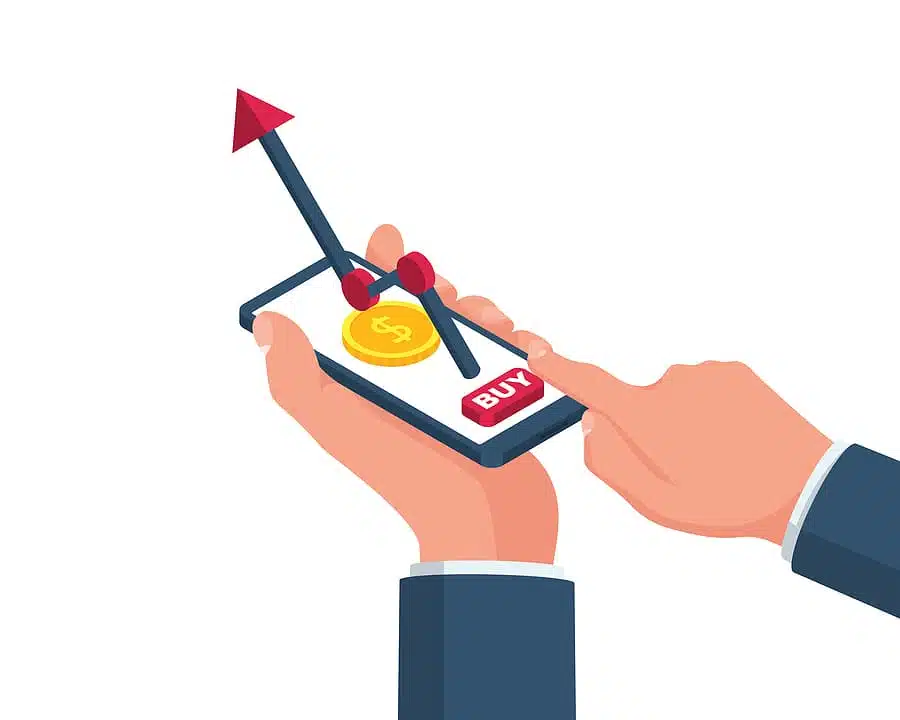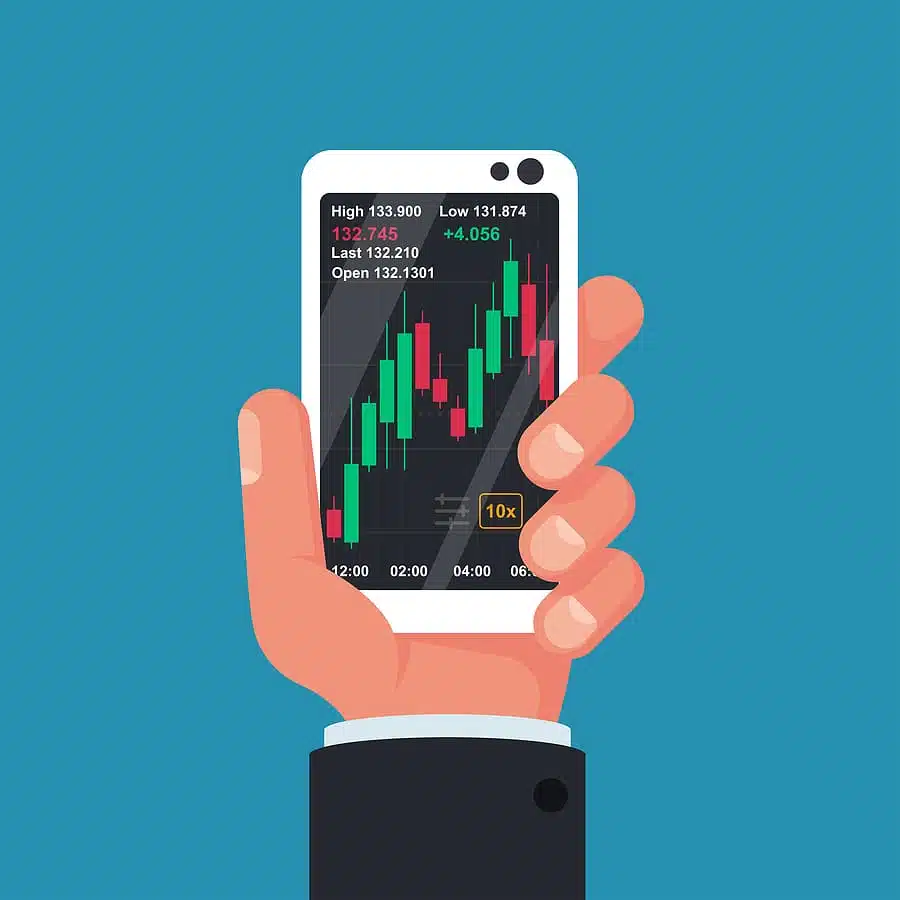Table of Contents
Are you curious about how you can create your own trading bot?
If the answer is yes, then you’re on the right path.
The algorithmic trading (also known as algo trading) market is growing at a rapid speed due to the rising demand for quick, reliable, and effective order execution.
Even more, a J.P. Morgan survey claims that artificial intelligence and machine learning remain the most influential technologies for the third year in a row across assets classes and regions.
This growing influence is clearly reflected in the rise of AI algorithms for trading, with machine learning models enabling real-time data processing, prediction, and automation.
As AI continues to transform the industry, it’s essential for anyone looking to improve their trading strategy to understand how to leverage algorithmic trading systems effectively.
What is Algorithmic Trading? How AI Powers It Today
Trading algorithms, or algo trading, refer to a set of computer-coded instructions designed to automatically execute buy and sell orders in the financial markets based on predefined criteria. These rules can be based on a variety of factors, including price movements, timing, technical indicators, volume, or even complex mathematical models.
When current market conditions align with these programmed criteria, the algorithmic trading system initiates trades on behalf of the user—eliminating the need for manual intervention and enabling faster, more consistent decision-making.
For this reason, many professional traders turn to the top software consulting companies to build robust trading platforms that implement automated strategies tailored to their goals.
How is AI used in algorithmic trading?
AI in algorithmic trading is leveraged in various ways to enable data-driven decision-making and improve the accuracy of trade execution.
To start, AI-powered algorithms are capable of analyzing vast amounts of data to identify patterns and execute trades—helping you find opportunities you may have otherwise overlooked. Unlike rule-based systems that follow fixed, step-by-step instructions to automate decisions, AI-based systems adapt to changing market conditions to continuously improve outcomes.
These capabilities often stem from focused AI product development efforts that bring smarter, faster trading tools to life.
Natural language processing (NLP) has also gained popularity for its ability to analyze news and social media trends in real time, enabling the automation of trading strategies based on market sentiment. Using this information, NLP systems can improve their forecasting abilities and provide traders with more accurate market predictions.
A great example of this is J.P. Morgan’s LOXM, a robot created to automate equity trading in real time. According to Business Insider, LOXM was trained on billions of historic transactions to execute equity trades with maximum speed and optimal prices. So far, LOXM has proven to save resources and outperform both manual and automated existing trading methods in trials.
For companies seeking similar innovation, combining AI business solutions with expert AI integration consulting can help ensure seamless adoption and maximum return on AI-driven trading systems.
Top 5 AI Algorithms for Trading
So which AI bot is best for trading?
While Scopic’s AI software consulting services can help you choose the system that best fits your specific trading needs and goals, here are 5 algorithmic trading systems worth exploring:
Decision Trees
A Decision Tree is a supervised learning algorithm used for both classification and regression tasks. It mimics human decision-making by splitting data into branches based on feature conditions—like “if-then” rules—until it reaches a prediction.
Pros:
- Easy to understand and interpret
- Can deal with missing values
- Requires minimal data preparation
- Fast to train and test
- Transparent logic
Cons:
- Prone to overfitting
- Unstable to changes in the data
- Non-continuous
- Computationally expensive, especially with large datasets
Ideal use case: Rule-based trade filtering, portfolio risk classification, algorithmic strategy prototyping
Neural Networks (LSTM for time series)
A Long Short-Term Memory Network (LSTM) is an advanced recurrent neural network that uses “gates” to capture both long-term and short-term memory. These gates regulate the flow of information through memory cells, allowing the model to learn which data to retain or forget over time—making it highly effective for forecasting in dynamic environments like financial markets.
Pros:
- Captures long-term dependencies
- Robustness to noisy data
- Flexibility
- High accuracy when trained on large datasets
- Designed to capture historical information of time series data
Cons:
- Computationally expensive
- Longer training times
- Difficult to interpret
- Risk of overfitting
Ideal use case: Forecasting stock prices, volatility modeling, trade signal generation
Support Vector Machines (SVM)
A Support Vector Machine is a supervised learning algorithm used primarily for classification but also effective for regression tasks. It works by classifying data by finding an optimal line or hyperplane that best separates different classes with the maximum possible margin.
Pros:
- Accurate in high-dimensional spaces
- Handles non-linear data
- Robust to overfitting
- Works well with small- to medium-sized datasets
Cons:
- Scalability issues with large datasets
- Sensitive to mislabeled data
- Training can be slow
- Less interpretable compared to decision trees
Ideal use case: Classifying market states and trading opportunities, detecting anomalies, predicting directional movements based on technical indicators
Random Forests
A Random Forest is an ensemble of decision trees in which each decision tree is trained with a specific random noise. By averaging the predictions of multiple diverse trees, the model reduces variance and improves overall accuracy and robustness.
Pros:
- High accuracy
- Does not require the use of data preprocessing methods
- Robust to noise
- Works well with both categorical and numerical data
- Provides feature importance rankings
Cons:
- Computational complexity
- Slower predictions compared to simpler models
- Lack of interpretability
- May not perform as well on sparse datasets
Ideal use case: Predicting asset price direction, ranking feature importance in trading signals, portfolio risk modeling
Reinforcement Learning Agents
A Reinforcement Learning Agent is a type of machine learning model that learns optimal behavior by interacting with an environment and receiving feedback in the form of rewards or penalties. It explores various actions and adjusts its strategy over time to maximize cumulative rewards, making it highly suitable for dynamic and sequential decision-making scenarios like trading.
Pros:
- Adapts to changing environments
- Scalability to complex decision-making tasks
- Learns from sequential decision-making
- Does not require labeled data
- Can optimize long-term cumulative rewards
Cons:
- Requires a large number of training episodes
- Complex and computationally expensive
- Sensitive to hyperparameter tuning
- Harder to interpret and debug
Ideal use case: Dynamic portfolio management, trade execution optimization, developing adaptive strategies that evolve through real-time feedback
Success Roadmap: 5 Steps to Create a Trading Algorithm
Step 1: Create a Trading Platform
The core idea behind creating a trading platform is to build a robust trading infrastructure capable of receiving data from multiple sources and storing it efficiently for backtesting. This allows you to test your strategies using historical data, helping refine the most effective combination of buy and sell rules for your AI algorithm for trading.
There are two primary approaches to get started:
- Building around an existing API: You can integrate market data and execution APIs to create a tailored solution that fits your specific strategy needs. This method offers flexibility in how you manage and scale your infrastructure—especially important if you’re hosting your AI models in the cloud or on hybrid architectures.
- Using a ready-made platform: Python-based frameworks like Backtrader are designed for backtesting and come pre-connected to popular exchanges. They allow for quicker prototyping and provide essential trading functionalities out of the box.
Ultimately, the choice depends on your goals. If you’re experimenting or testing concepts, platforms like Backtrader paired with Python libraries can be highly effective.
But if you’re aiming to fully optimize your trades, a custom financial software development solution offers unmatched flexibility, complete control over data processing, and seamless AI model hosting—whether on-premises, in the cloud, or via containerized deployment.
Step 2: Develop and Visualize Your Trading Algorithm Strategy
The development of a strategy is the most important part of a successful trading algorithm. However, as you know, a winning strategy is not something you can find on Google. Its creation requires research, mathematical thinking, and an in-depth understanding of financial markets.
Each market has its own rules. So, strategies curated for a stock market can differ from the ones that may work perfectly for forex pairs.
Remember, coding is impossible if the strategy can’t be visualized in a flowchart. This means you need to come up with a rule-based strategy in order to develop an automated trading system with implemented buy and sell orders and price targets based on quantifiable price data.
And if you’re interested in leveraging the power of AI in algorithmic trading, then comprehensive ML model design and thoughtful model selection are key. Choosing the right model—whether it’s an LSTM for time-series forecasting or a Random Forest for classification tasks—is essential for adapting to market behavior and improving trade outcomes.
Step 3: Define Time Frame and Trading Frequency
Time frames are an extremely important indicator for programming and data science. So, it’s not surprising that time frame analysis or multi-time frame comparisons are inseparable components for any successful trading algo strategy.
Although well-coded trading algorithms work independently, monitoring and evaluation are always recommended. This means you should take into consideration your availability when choosing the time frame and trading frequency. While some traders specialize in HFT (high-frequency trading), people who can’t dedicate much time to trading during the day may choose long-term trading.
For those seeking a more efficient trading process, the potential of AI-powered bots is impossible to ignore. These bots use artificial intelligence to adapt their strategies based on different time frames by analyzing historical data through backtesting. This allows them to optimize performance across varying market conditions.
Step 4: Test the Trading Algorithm on Historical Data
When your trading algorithm is coded based on your strategy, it’s recommended to avoid trading real money until the trading bot is tested. This means running the algorithm on historical price data. By using a number of variables, you can analyze the performance of the algorithm over thousands of trades.
However, many wonder: Are traditional assessment methods enough?
While traditional methods have been used for years, they struggle to predict financial changes at the speed required by today’s markets. Fortunately, AI can now create realistic market simulations to help traders test their strategies—without the financial risk.
In an algorithmic trading system, data is typically divided into training and testing sets to develop and validate predictive models. The training set is used to teach the algorithm how to recognize patterns and make decisions, while the testing set evaluates how well the model performs on unseen data—helping ensure it generalizes well to real market conditions.
Step 5: Connect Algorithm to a Live Demo Trading Account
After confirming the profitability of your trading algorithm, the next step is to move into live AI trading using a demo or paper trading account. Unlike backtesting, live environments reflect real market dynamics—where your algorithm’s actions can influence outcomes.
Monitor performance closely, as advanced systems often rely on real-time reinforcement learning feedback loops and auto-tuning to continuously adapt and optimize trading decisions under live conditions.
And that’s it!
Building an AI Trading Bot: What to Know Before You Start
The creation and coding of an algorithmic trading system is a complex process. It requires collaboration between financial experts and skilled developers. Once you have a rules-based or AI-driven strategy in place, a team experienced in Python, C++, and AI frameworks like TensorFlow or PyTorch can bring it to life.
When exploring AI in algorithmic trading, it’s important to weigh the initial development time and cost against the long-term benefits. While a custom solution may take longer to build, it offers lasting performance, scalability, and a greater return on investment over time.
Partnering with a dedicated AI development company ensures your software is tailored to your strategy, infrastructure, and goals.
Don’t wait—develop your own custom trading software today.
FAQs about AI in Algorithmic Trading
Can I use AI for trading?
Yes, you can use AI for trading by implementing an algorithmic trading system, which helps uncover patterns, reduce manual effort, and improve decision-making and accuracy.
Which AI bot is best for trading?
The best AI bots are custom solutions built using advanced AI algorithms for trading—such as LSTM networks, Reinforcement Learning, or Random Forests—designed to analyze market data, adapt to changing conditions, and execute strategies tailored to specific financial goals.
Are AI trading bots profitable?
Yes, AI trading bots can be profitable, especially when integrated into algorithmic trading strategies that leverage machine learning for real-time data analysis and decision-making, but their success depends on market conditions, model accuracy, and proper risk management.
Custom AI development helps maximize profitability by building solutions tailored to your specific trading style—reducing inefficiencies, improving prediction accuracy, and unlocking opportunities that off-the-shelf tools might miss.
What is the best language for building an algorithmic trading bot?
Python is widely considered the best language for building algorithmic trading bots due to its simplicity, vast ecosystem of financial and data science libraries, and strong community support.
AI strategy consulting can help guide you in selecting the right technologies and frameworks, ensuring your trading solutions are aligned with your business objectives and built for long-term success.
Is Python good for algorithmic trading?
Yes, Python is highly suitable for algorithmic trading as it enables the efficient development and deployment of AI algorithms for trading using its extensive ecosystem of data science and machine learning libraries.
This guide was authored by Rimma Ghazaryan and updated by Baily Ramsey.







